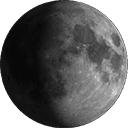The Sloan great wall. Rich clusters
Author(s): Einasto, M.; Tago, E.; Saar, E.; et al.
Source: ASTRONOMY & ASTROPHYSICS Volume: 522 Article Number: A92 DOI: 10.1051/0004-6361/201015165 Published: NOV 2010
Aims. We present the results of the study of the substructure and galaxy content of ten rich clusters of galaxies in three different superclusters of the Sloan great wall, the richest nearby system of galaxies (hereafter SGW).
Methods. We determine the substructure in clusters using the «Mclust» package from the «R» statistical environment and analyse their galaxy content with information about colours and morphological types of galaxies. We analyse the distribution of the peculiar velocities of galaxies in clusters and calculate the peculiar velocity of the first ranked galaxy.
Results. We show that five clusters in our sample have more than one component; in some clusters the different components also have different galaxy content. In other clusters there are distinct components in the distribution of the peculiar velocities of galaxies. We find that in some clusters with substructure the peculiar velocities of the first ranked galaxies are high. All clusters in our sample host luminous red galaxies; in eight clusters their number exceeds ten. Luminous red galaxies can be found both in the central areas of clusters and in the outskirts, some of them have high peculiar velocities. About 1/3 of the red galaxies in clusters are spirals. The scatter of colours of red ellipticals is in most clusters larger than that of red spirals. The fraction of red galaxies in rich clusters in the cores of the richest superclusters is larger than the fraction of red galaxies in other very rich clusters in the SGW.
Conclusions. The presence of substructure in rich clusters, signs of possible mergers and infall, and the high peculiar velocities of the first ranked galaxies suggest that the clusters in our sample are not yet virialized. We present merger trees of dark matter haloes in an N-body simulation to demonstrate the formation of present-day dark matter haloes via multiple mergers during their evolution. In simulated dark matter haloes we find a substructure similar to that in observed clusters.






